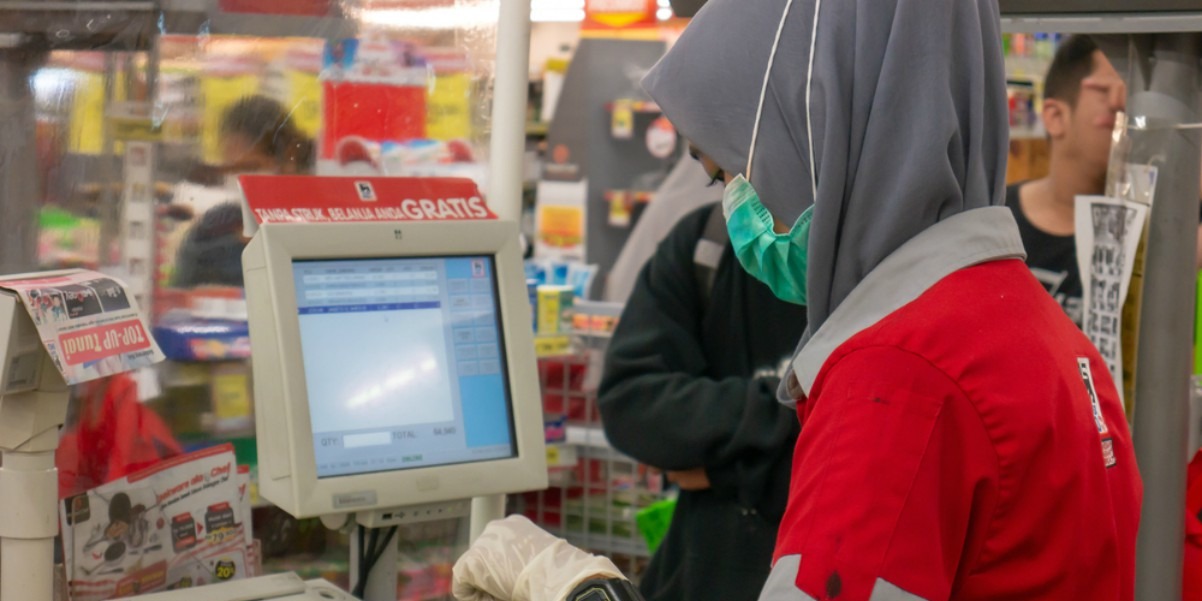Indonesia’s GDP suffers worse than expected contraction in second-quarter
Indonesia’s GDP contracted 5.32% in the second-quarter compared to the same three months last year, a result that is worse than the 4.3% anticipated by the government.
Almost all sectors contracted both quarter-on-quarter and year-on-year, according to data from Statistics Indonesia (BPS) on Wednesday (August 5).
The worst quarterly GDP performance since the 1998 Asian financial crisis is a result of the COVID-19 pandemic that locked down most of the country and inflicted joblessness among the population.
The government eased lockdown measures towards the end of the second-quarter, in early June.
AGRICULTURE, INFOCOMMS RESILIENT
From the first-quarter to the second, only three sectors showed positive growth: agriculture (16.24%), infocomms (3.44%), and water supply (1.28%).
The worst-hit sectors were transportation and warehousing (-29.22%), Accommodation (hospitality) and F&B (-22.31%), and Other services (-15.12%).
It was the same for year-on-year comparisons, with transportation and warehousing contracting by 30.84%, Hospitality and F&B by 22.02%, and Other services by 12.6%.
Year-on-year, seven out of the 17 tracked sectors saw growth: Infocomms (10.88%), Water supply (4.56%), Health services (3.71%), Real estate (2.3%), Agriculture (2.19%), Education (1.21%), and Financial services (1.03%).
Of these, only infocomms registered higher growth for the second-quarter of this year compared to the same three months in 2019, pointing to the increased demand for services as people worked from home and took to e-commerce to buy and sell amid mass physical and social distancing restrictions.
AGRICULTURE
Almost all agricultural sub-sectors saw growth in the second-quarter year-on-year.
However, two contracted: Fisheries (-0.63%), and Animal farming (-1.83%). Animal farming saw a drop in demand for poultry, according to Statistics Indonesia.
Crops farming was the biggest growth sector, at an increase of 9.23%. Statistics Indonesia said this rise was because of a shift in the growing season that saw peak harvest in the second quarter.
HOSPITALITY HIT BY NO TOURISM
The Accommodation sector contracted by 44.23% in the second-quarter year-on-year as tourism came almost to a standstill.
F&B was pushed down by 16.81% year-on-year as Indonesians cooked and ate at home.
|
READ ALSO Tourism came to a halt in April but shows positive signs of cautious change - UNWTO Indonesia's halal hotels face steep uphill battle towards recovery |
HOUSEHOLD SPENDING
Household spending was down by 5.51% compared to a growth of 5.18% year-on-year. This sector normally makes up more than 50% of GDP.
Indonesians forked up far fewer rupiah for transport and communications (-15.33%) and restaurants and hotels (-16.53%).
As expected, with most staying at home amid a virus pandemic, Indonesians put their money into Homewares (2.36%), and Health and Education (2.02%).
IMPORTS AND EXPORTS
Imports and exports were worse off.
Second-quarter exports slid by 11.66% and imports plunged by 16.96%.
Services were the worst affected, falling by 52.7% as exports and 41.36% as imports.
INVESTMENTS
Investments fell 8.61% compared to the 4.55% growth in the second-quarter of last year.
Indonesia has a good track record of attracting foreign direct investments (FDI). It was 18th in the world, and the highest-ranked Islamic country, bringing in $23.429 billion in FDI last year.
The United Nations anticipates global FDI to shrink by 40% this year.
© SalaamGateway.com 2020 All Rights Reserved
